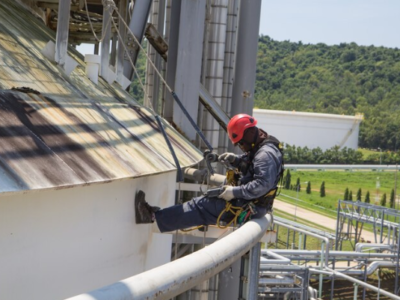Even the most straightforward construction projects are complex undertakings involving lots of people involved. In order to prevent delays, disputes, conflicts, budget overruns, and other problems, the project needs to be meticulously planned, sometimes long before the “construction” work begins.
The planning period of a construction project is known as pre-construction. The purpose of pre-construction planning is to thoroughly assess all factors involved in the project, including the complete plan & drawings, finances, and a construction schedule which maximizes productivity and ensures smooth sailing from that point on.
In this article, the construction consultants from The Vertex Companies, LLC will provide a brief rundown of the key steps involved in pre-construction planning. Keep reading to learn more.
What are the steps involved in planning a construction project?
The following steps aren’t arranged in a specific order. This is because all of these steps occur more or less simultaneously (unless otherwise noted).
The planning stages of pre-construction include:
Initial meeting between owner and contractor
The client and the contractor will meet face-to-face to go over the project and discuss an initial budget. The main purpose of this meeting is to familiarize the contractor with what the client wants and start putting together the rest of the pre-construction plan.
Defining project objectives
This is the stage where the owners or developers outline the project. They often work with a design team (architects, engineers and consultants) to define the vision and owner project requirements (OPR). The design team then creates conceptual blueprints and architectural designs that are looked over. When that information is given to the contractor, they can help determine whether the client’s vision is feasible for construction on the desired location.
From here, the contractor will move on to the 3 main objectives of pre-construction planning: setting a budget, creating a schedule, and determining the scope of work.
Outlining project scope
The scope is a description of the actual work that will be done during the construction job. A detailed project scope explains exactly which kinds of workers, materials, and equipment will be necessary for each phase.
Construction site analysis
Making sure the construction site is suitable for the client’s goals is a crucial part of the pre-construction process. This includes evaluating the site’s soil, and considering factors such as parking, landscaping, capacity, traffic flow, and logistics of construction activities. Ideally, some of this is already done in the due diligence phase of buying the property.
Determining a budget
Cost estimation and value optimization are used to determine the correct budget that covers the needs of the project and accounts for unforeseen complications (eg., delays due to unexpectedly harsh weather).
Creating a project schedule
All phases of the work will need to be carefully planned out so as to avoid schedule conflicts and set realistic deadlines. Like a good budget plan, a good schedule also needs to account for delays and inefficiencies.
Initial schematic design
The initial schematic design enables the client to get a clear idea of how the project will turn out. At this stage, the client can offer feedback and ask for adjustments. The rest of the construction project will typically be drawn from this initial schematic design.
Getting the required approvals
Every construction project needs building permits and approvals before it can move into the building stage and (ultimately) post-construction. These permits and approvals are usually acquired by the contractor working closely with the jurisdiction.
Procurement management
Long lead times for materials and equipment can result in costly delays and schedule conflicts. The best way to avoid this problem is by careful pre-planning during the early stages of the project.













Comments